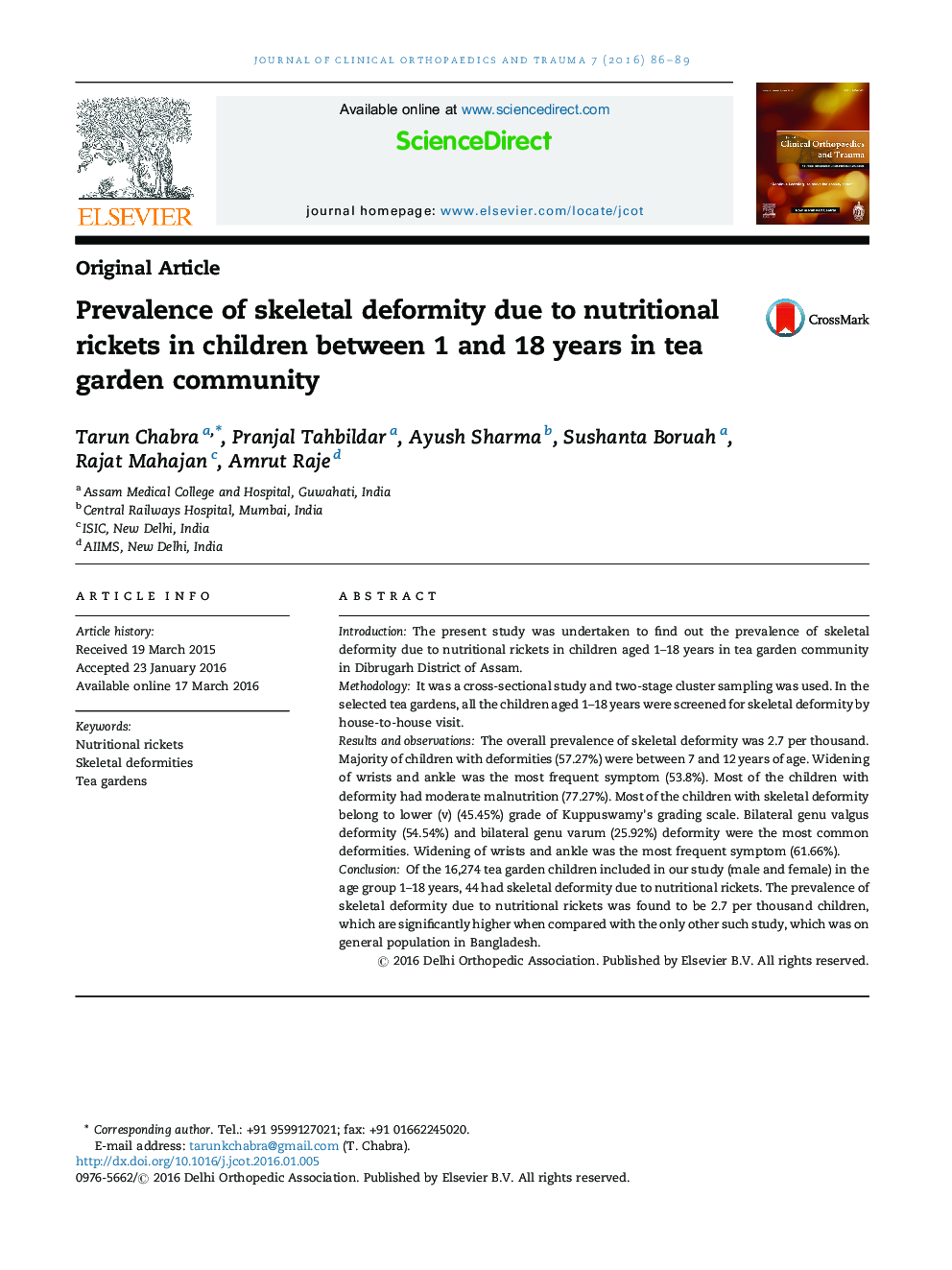| Article ID | Journal | Published Year | Pages | File Type |
|---|---|---|---|---|
| 3245199 | Journal of Clinical Orthopaedics and Trauma | 2016 | 4 Pages |
IntroductionThe present study was undertaken to find out the prevalence of skeletal deformity due to nutritional rickets in children aged 1–18 years in tea garden community in Dibrugarh District of Assam.MethodologyIt was a cross-sectional study and two-stage cluster sampling was used. In the selected tea gardens, all the children aged 1–18 years were screened for skeletal deformity by house-to-house visit.Results and observationsThe overall prevalence of skeletal deformity was 2.7 per thousand. Majority of children with deformities (57.27%) were between 7 and 12 years of age. Widening of wrists and ankle was the most frequent symptom (53.8%). Most of the children with deformity had moderate malnutrition (77.27%). Most of the children with skeletal deformity belong to lower (v) (45.45%) grade of Kuppuswamy's grading scale. Bilateral genu valgus deformity (54.54%) and bilateral genu varum (25.92%) deformity were the most common deformities. Widening of wrists and ankle was the most frequent symptom (61.66%).ConclusionOf the 16,274 tea garden children included in our study (male and female) in the age group 1–18 years, 44 had skeletal deformity due to nutritional rickets. The prevalence of skeletal deformity due to nutritional rickets was found to be 2.7 per thousand children, which are significantly higher when compared with the only other such study, which was on general population in Bangladesh.
